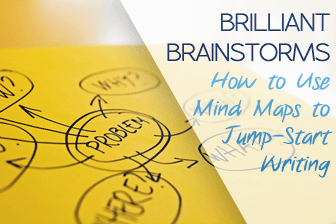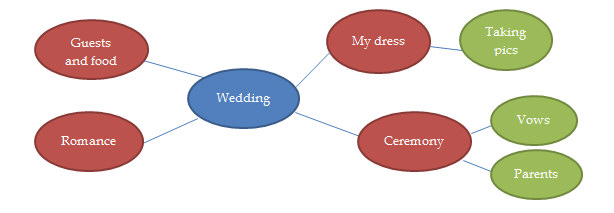I Have to Teach Writing: Now What? Where to Start with Your First Writing Class


Using mind maps to organize thoughts, brainstorm ideas, and synthesize information will surely jump-start your students’ writing.

Mind mapping is a wonderful tool to present to various levels of language learners. It can be used in many different ways, but especially in the realm of writing. It helps students begin a writing task, takes brainstorming to a new level, and actively involves students in creating a road map for their thoughts. So what exactly is a mind map? It is best explained using an example and comparing it to regular brainstorming. Mind mapping visually looks like a map of sorts. Instead of a linear model for brainstorming—or just making a list—this allows students to spread out and move around on the page. It starts with a topic in the middle, and then proceeds with keywords that branch off the main topic idea. Sub topics can then be branched off into subtopics until the page is covered with keyword ideas related to the main idea. Students can use pen and paper to draw their mind maps, and you can give examples on the board. You can start out with a simple writing assignment or bigger tasks like an essay, depending on the level and your class needs. Begin with a topic, for example: My wedding day. Students start with the main topic in the middle and begin brainstorming. It could look something like this:

The students can determine what their main idea is from the beginning or they can also use a mind map to brainstorm a main idea. This works well if you give them a vague subject like, write about the happiest day of your life. They could brainstorm the top three ideas and then choose what their main topic will be. Here we have a clearly set topic, the wedding day. Once they have the central idea, they can list out keyword ideas on branches from the main idea. They can also add more detail to the supporting ideas by branching off the supporting ideas. So under “Ceremony” there could be another five bubbles each with a different sub-topic, like vows, parents, music, rings, etc. Students can use different colors and shapes to signify main ideas, supporting ideas, and sub-topics. This technique allows them to open up the possibilities, and there is no one right way to devise a mind map.
The next step in the mind mapping process, after they have a pretty complete start, is to evaluate how they feel about what is on their map. Once they have a lot of words on their maps, they can then start whittling down what they would like to include and what they would like to remove. Be sure to explain very clearly that these are just ideas for what they might want to write about. They don’t have to include everything that is on the mind map, and they can erase, edit and revise it as they move forward.
Depending on the range of the assignment, the mind map should reflect an appropriate length and should also maintain the subject matter appropriate for the project. If they are assigned a one page essay, then the above mind map is a good start for generating ideas, but they would then want to choose one or two supporting topics and flesh those out. Students could do a second mind map once they have decided their supporting ideas. This is simply a method for students to get their thoughts down on paper, and they don’t have to feel in any way tied to it.
After getting some solid ideas down in front of them, it is a much easier task to then approach the actual writing. If students have several keywords surrounding a supporting idea, they can then take those same words and begin composing their topic sentences with supporting sentences. They could use much of the same language they have already written down. It makes the task of composition much more manageable and gives them a concrete tool to reference. Students generally move from the mind map activity into the writing process with more enthusiasm and more direction.
Because mind mapping is so visual and only requires keywords, keep in mind that there are many ways you can adapt it for lower or higher levels. Beginners enjoy the fact that they get to draw things out, use colored pens or pencils, and have such a visual model for a task that may intimidate them at first. It works well for paragraph writing where students mind map their topic sentence, supporting ideas, and concluding sentence. It is a much shorter activity, but you may find that they are able to get more accomplished in a shorter period of time. For more advanced users, this technique can come in handy to prep them for large exams, essay writing, speech writing, or for organizing presentations.
Often once students are exposed to mind mapping, the old way of brainstorming takes a backseat, and this becomes the preferred method. You’ll be amazed at how easily and cohesively students are able to assemble their thoughts and writing!